traditions and superstitions part 2
More wedding traditions and superstitions coming at you in the second part of our series. If you’re curious, this is for you!
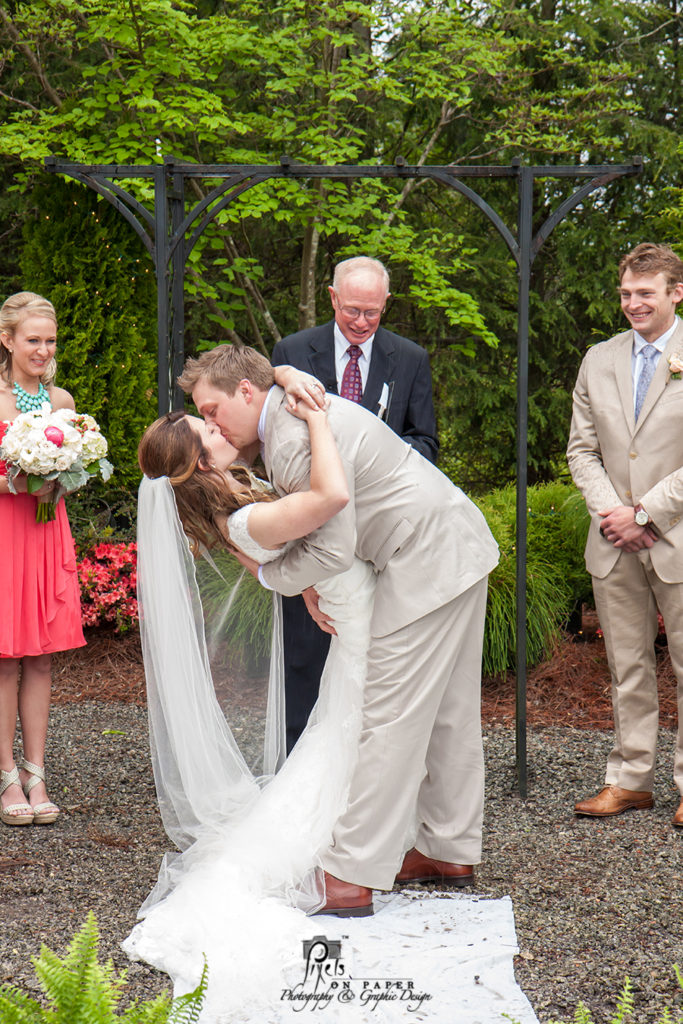
The first kiss after the I Dos comes from a Christian tradition that says that the bride and groom should kiss as an “exchange of souls” fulfilling the script “the two shall become one flesh.” It’s also just a great way to cap off the ceremony and cue everyone to cheer the newlyweds.
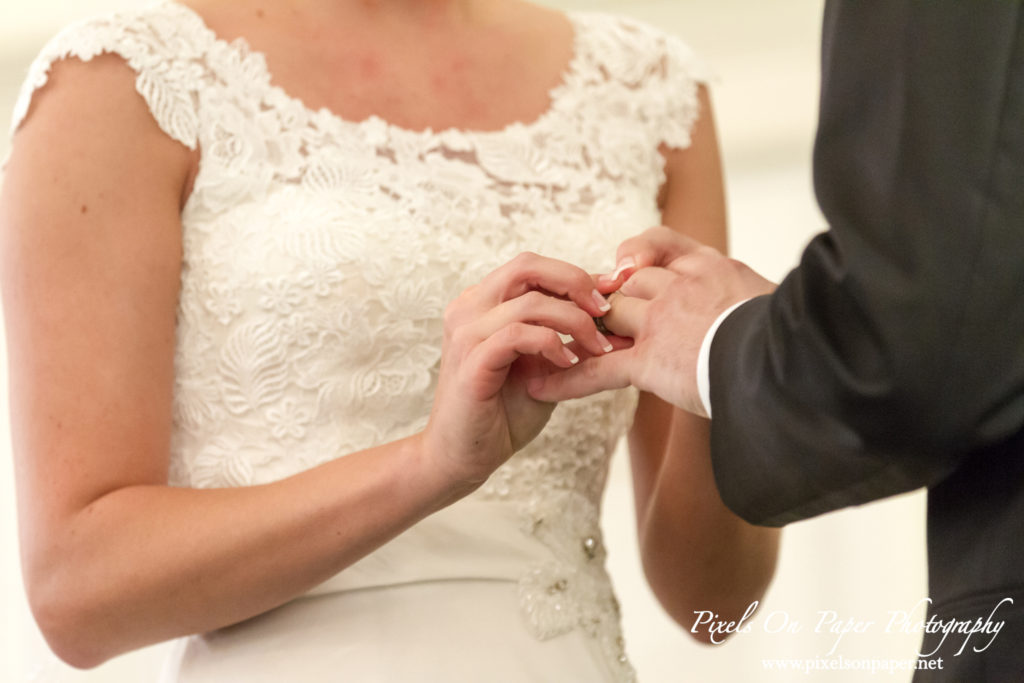
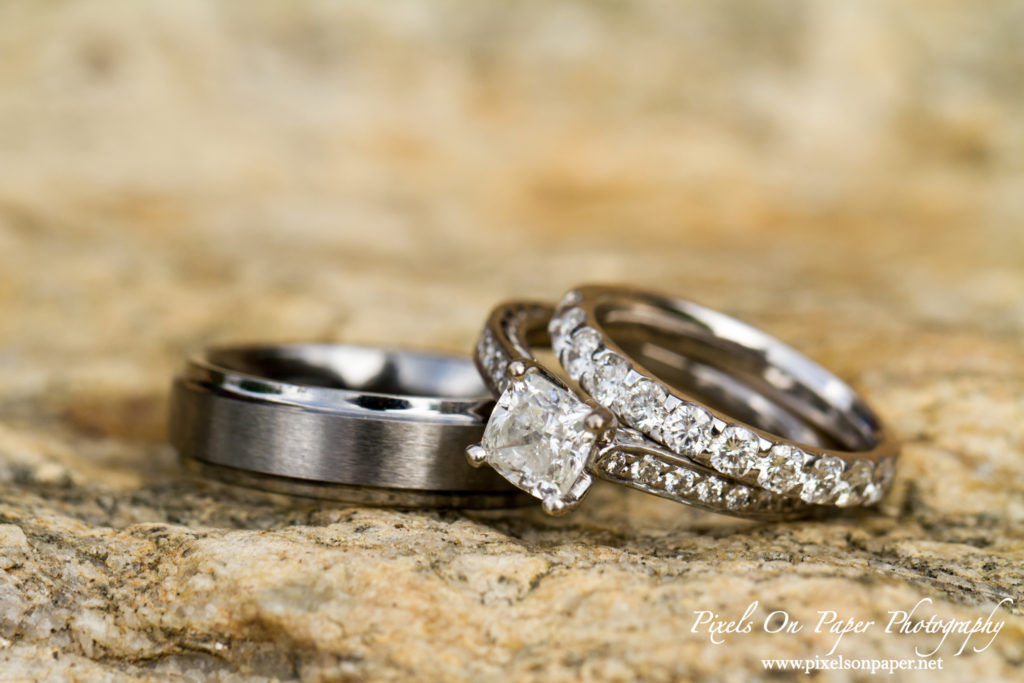
wedding rings
This is a good one, because the rings are the symbols you wear long after the dress has been wrapped for preservation and the thank you cards written. The bands represent the commitment a couple has made and mark them as taken for the rest of the world to see. Or the origins and types of rings over the years, see our blog about wedding rings.
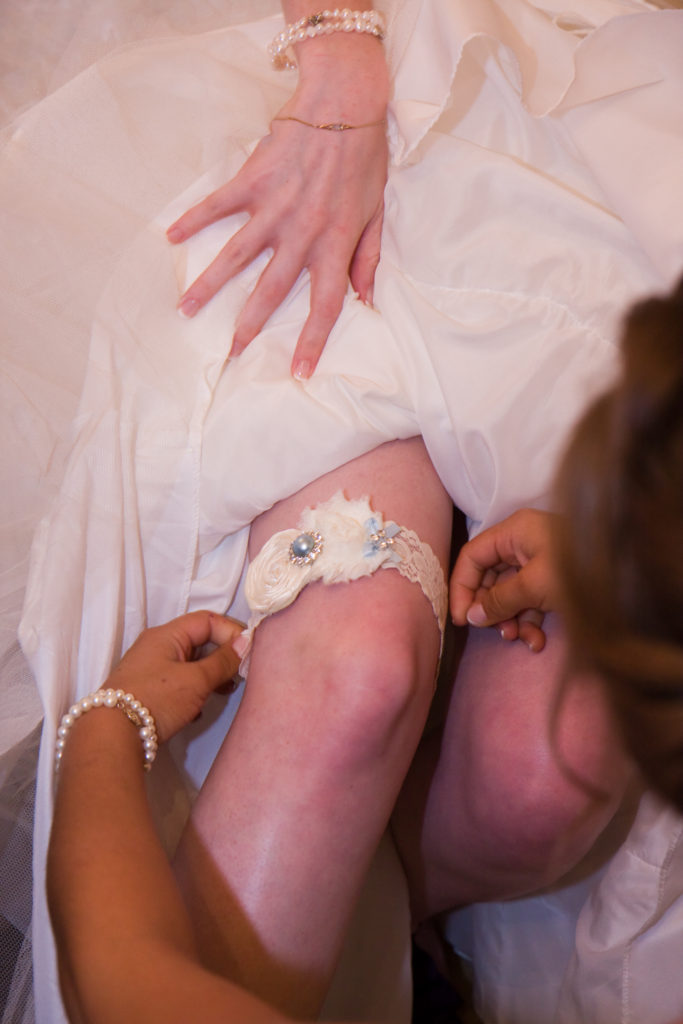
Tossing the garter 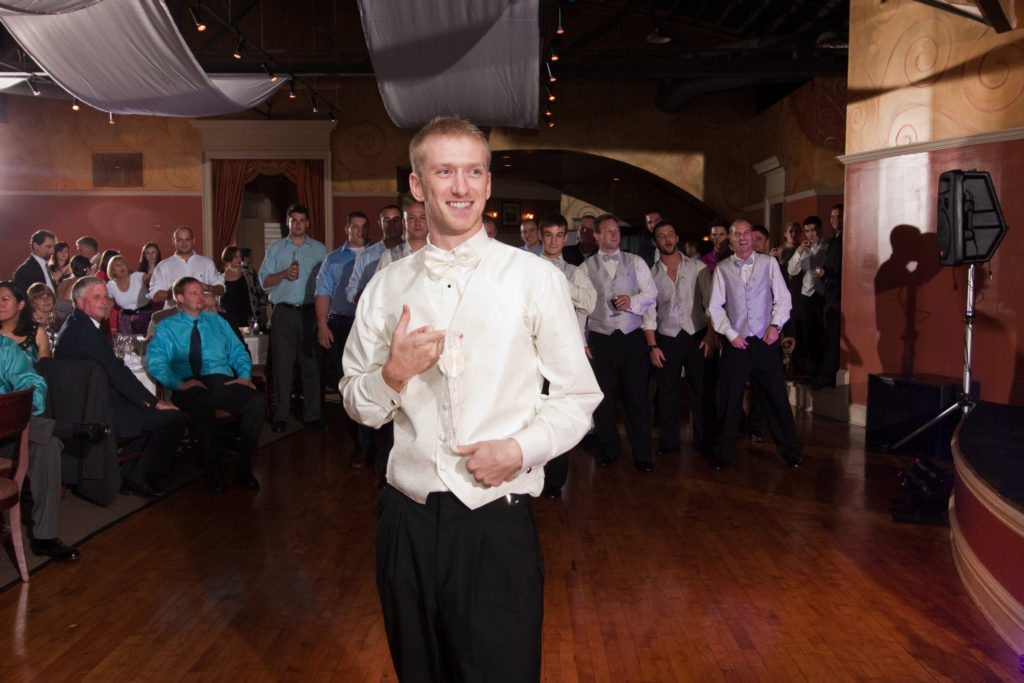
In the middle ages, having a piece of the bride’s dress, veil or bouquet was considered very lucky and this managed to devolve into people aggressively running at the bride to tear off a scrap of gown. She began throwing her garter as a way of saying “here you go,” and later tossed the bouquet as well to distract other guests. Want to know more? Here’s an entire blog about it.
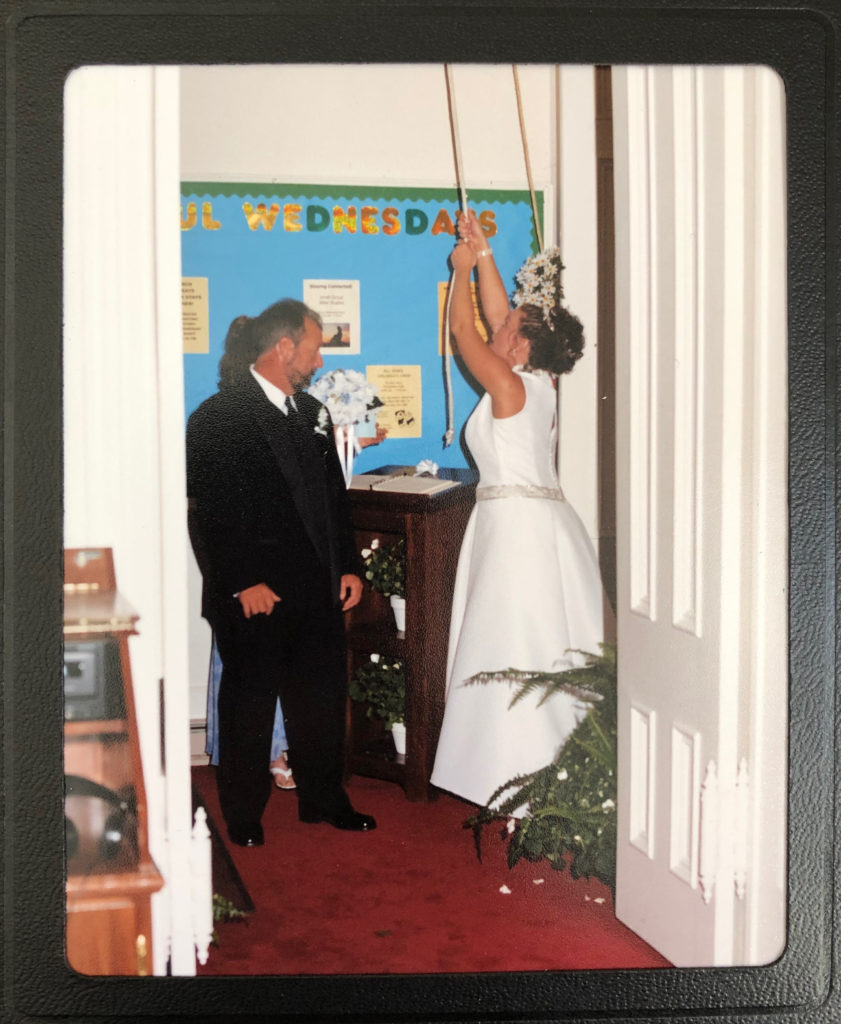
Misty ringing the church bells just before walking down the aisle to Ryan during their wedding. 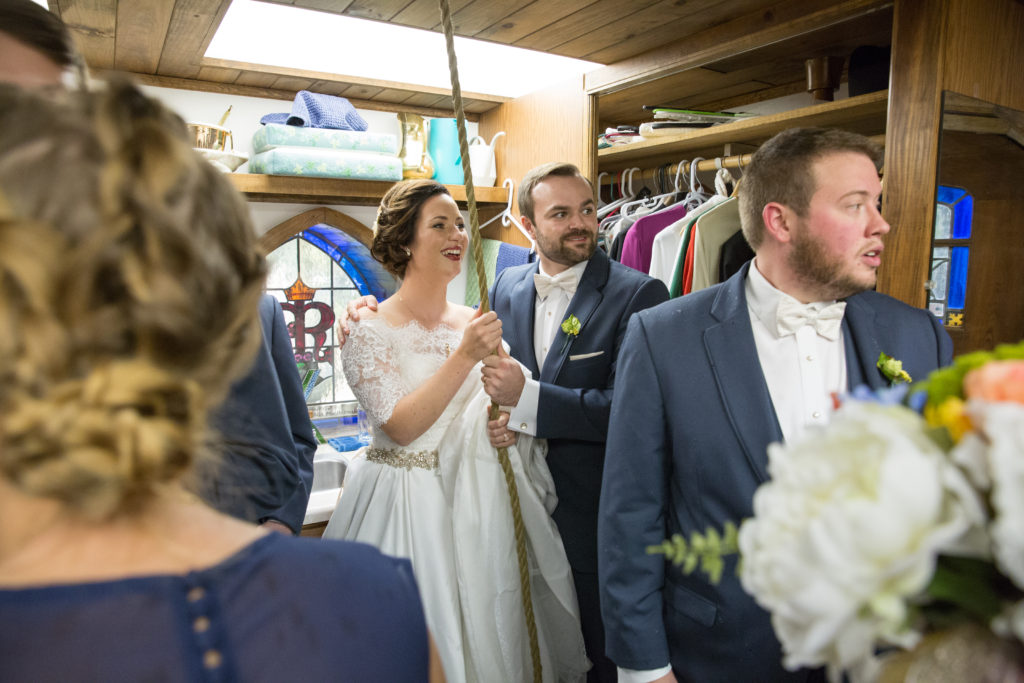
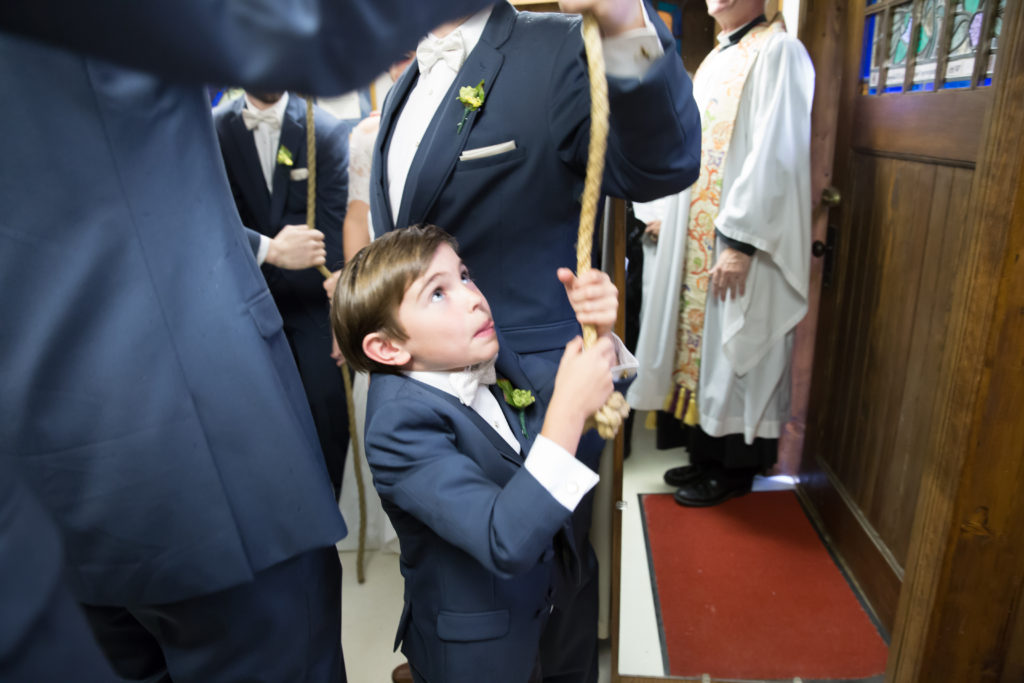
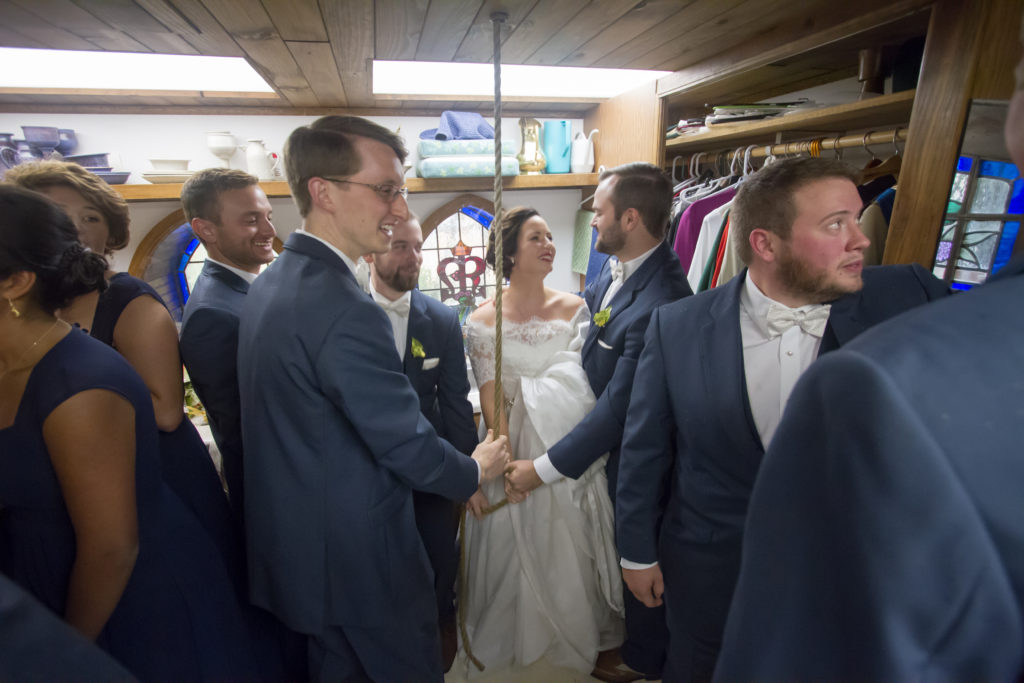
From centuries ago until this very day, ringing church bells is a way to announce that something important has happened in the community. You’ll know if you are a royal watcher that the 10 bells at Westminster Abbey pealed a specific “tune” called “Spliced Surprise Royal” when Princess William married Katherine Middleton. It took 3 hours and required over 5,000 orchestrated changes to make the joyful noise. More modest civilians married in churches can ring the bells themselves or request that a church volunteer do it to signal that they are celebrating a happy occasion. As with many other wedding traditions, ringing the bells is said to bring luck and happiness.
Dancing the Horah (hora, oro in some cultures) is common at receptions in Jewish cultures. Said to originate in the Balkans, dancing in a circle to Hava Nagila brings people close to the family together to celebrate a marriage or milestone. If you’ve never been to a Jewish wedding and gotten swept up in this dance and frivolity, try to before you die. It’s pretty amazing!
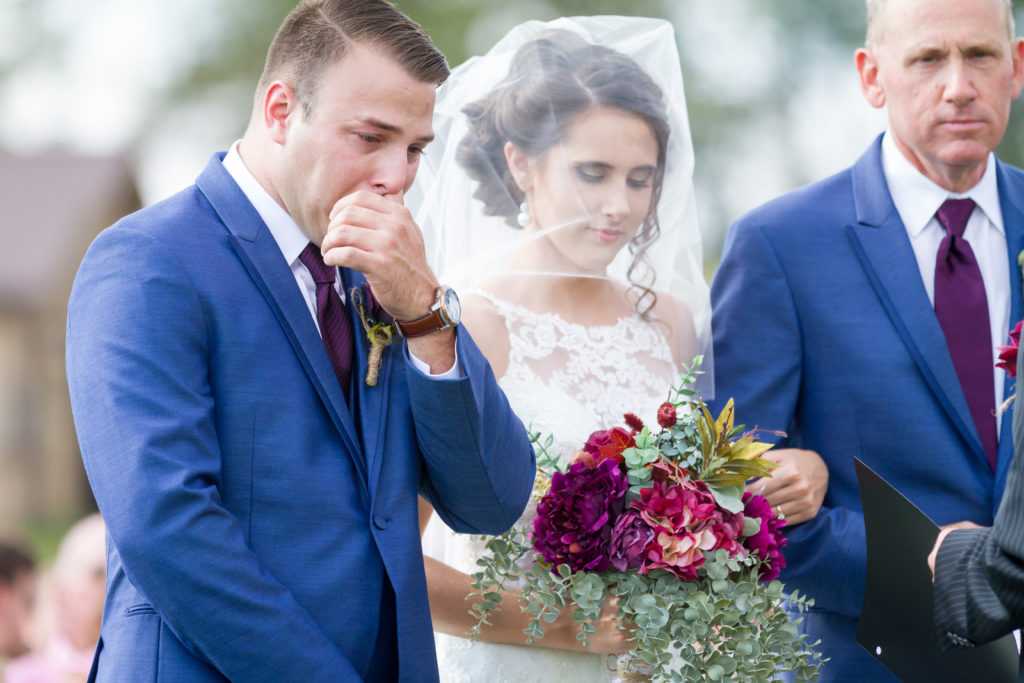
The wedding veil is no longer a must for the bride’s attire and often brides decide to forego wearing one if it doesn’t go with their dress, theme or season. Veils date back to Rome, when a bride wore one to ward off or confuse any evil spirits that might be lurking around trying to ruin her future happiness. Some brides in the middle ages wore them because marriages were arranged and if she wasn’t ……. a looker, let’s say …. her father wanted to keep that fact from the groom until the vows were said. Others wore veils as a sign of purity and chastity. Regardless, when worn well, they can be truly gorgeous.
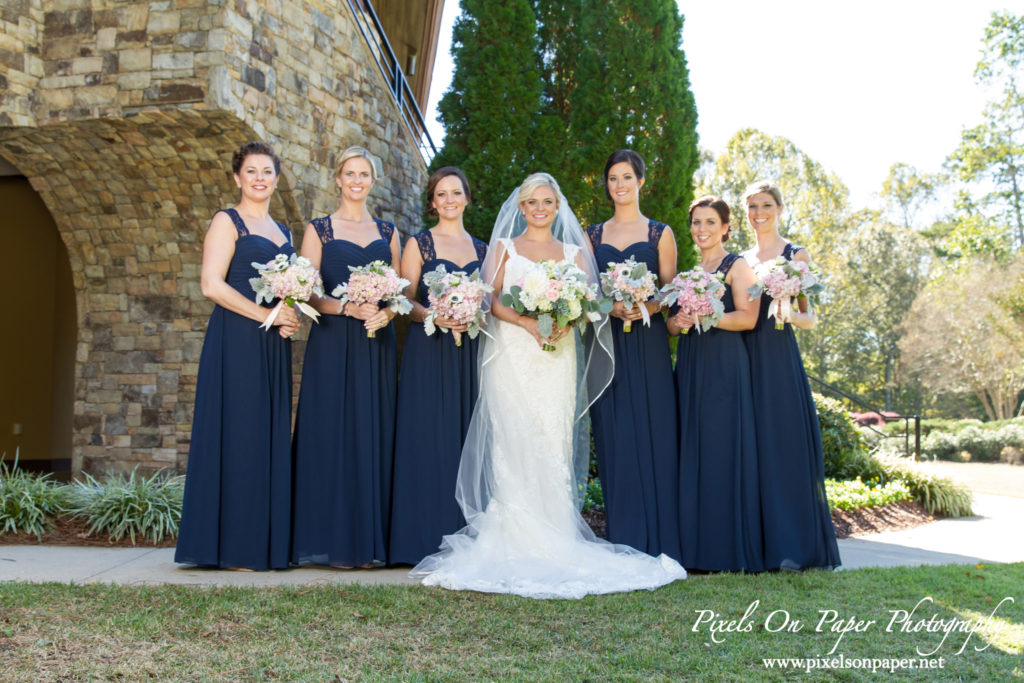
And bridesmaids? Well, we think of them now as the collection of relatives and closest friends you want by your side on your big day, but originally asking people to “stand up” for you was about the legality of the ceremony. In ….. wait for it …… Rome, the law required that you have at least 10 witnesses by your side when you said your vows so that there was no disputing that you were married later.
And there is safety in numbers. With 10 bridesmaids and 10 groomsmen all dressed the same can confuse villains, evil spirits, and vendors you haven’t yet paid.
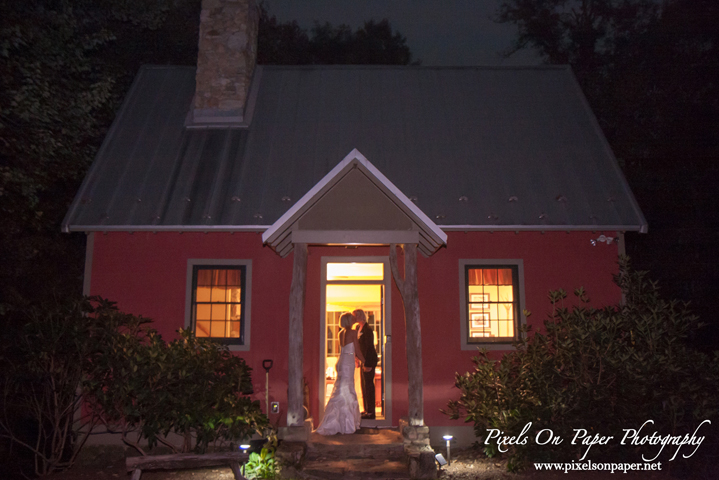
Carrying the bride over the threshold always makes me think of movies and TV shows in syndicated from the 1950s, when the husband would scoop up his “Little Lady” wife and carry her into the home that she would be cleaning like June Cleaver for the next 40 years. Cynical, I know. But this custom actually originated before the middle ages and again it was about warding off evil spirits that might come into the home on the soles of her feet. Later, it was to protect the bride’s reputation – ie she didn’t want to appear too eager to consummate the marriage.
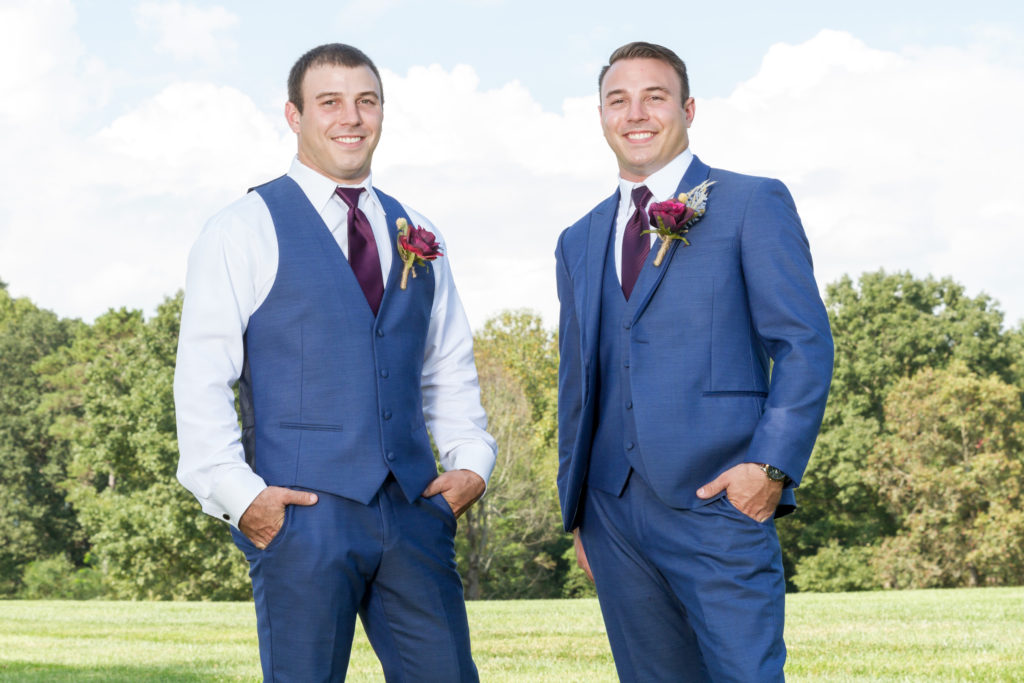
Why have a best man? Because every guy needs a wing man, someone to hold the ring, help him to stand up straight and show support. Originally, the best man came on the scene in the 16th century with those wacky Germanic Goths. But seriously, the best man’s job was to steal the bride from the neighboring community or disapproving family and get her to the ceremony on time. He was usually the best swordsman too and would watch over the couple during the ceremony.
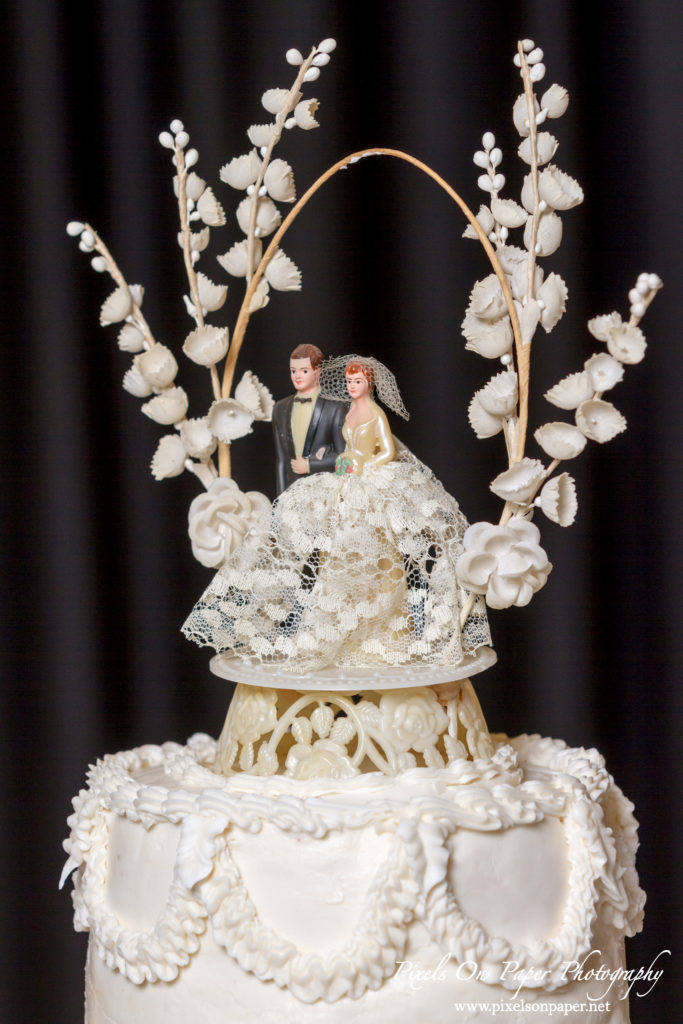
Wedding cake toppers are sort of mysterious as to how they came to be popular as part of the celebration, but one story that has been repeated is this one:
“Around 100 years or so ago a baker’s daughter who was about to get married asked her father to create a symbol of the unflinching love between her and the groom for the world to see.
After mulling over several ideas, the father decided to make a unique creation – a lovely wedding cake, with two fabulous figurines on top of it. The figurines that the cake top featured were obviously of his daughter and her groom-to-be. The baker had conceived the cake topper as the perfect symbol of their love and bonding. On the wedding day the daughter was moved by the sight of the cake made with love and affection by her father.”
These days, wedding toppers have become a LOT of fun with the inclusion of the couple’s dog, favorite activities, and personalities.
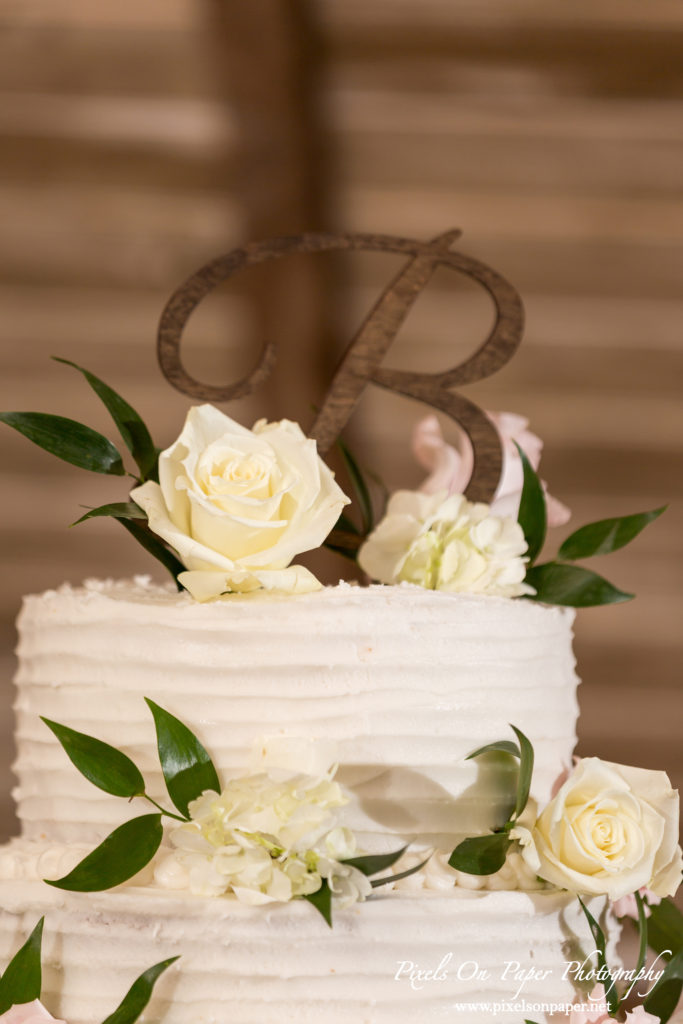
And finally, why do we keep the top tier of our wedding cake? To create a bacterial, freezer burn experience in the freezer! [BA-DUM, CHING!]
Actually, this tradition dates back to the 19th century when couples would save the top to celebrate the birth of their first child. We can no longer keep to such tight schedules and couples in the modern era are having children much later after their I Dos. These days, newlyweds save a big slice or the top and enjoy it on their first anniversary.
For more on wedding traditions and superstitions, check out Part 1 of this mini-series!
We love family portraits whether they are set in the studio, the great outdoors, a specific location like the mountains or high country, or on our property in our outdoor portrait garden. Pixels on Paper photographs, engagements and weddings, brides, and special events and portraits of all kinds in our Wilkesboro, NC studio. We would be honored to meet with you, learn about you and your family and be a part of taking special portraits that will become, we hope, family heirlooms.

This work is licensed under a Creative Commons Attribution-NonCommercial-NoDerivs 3.0 United States License All photos are ©2019 Pixels On Paper. Do not copy, crop, or remove watermark.
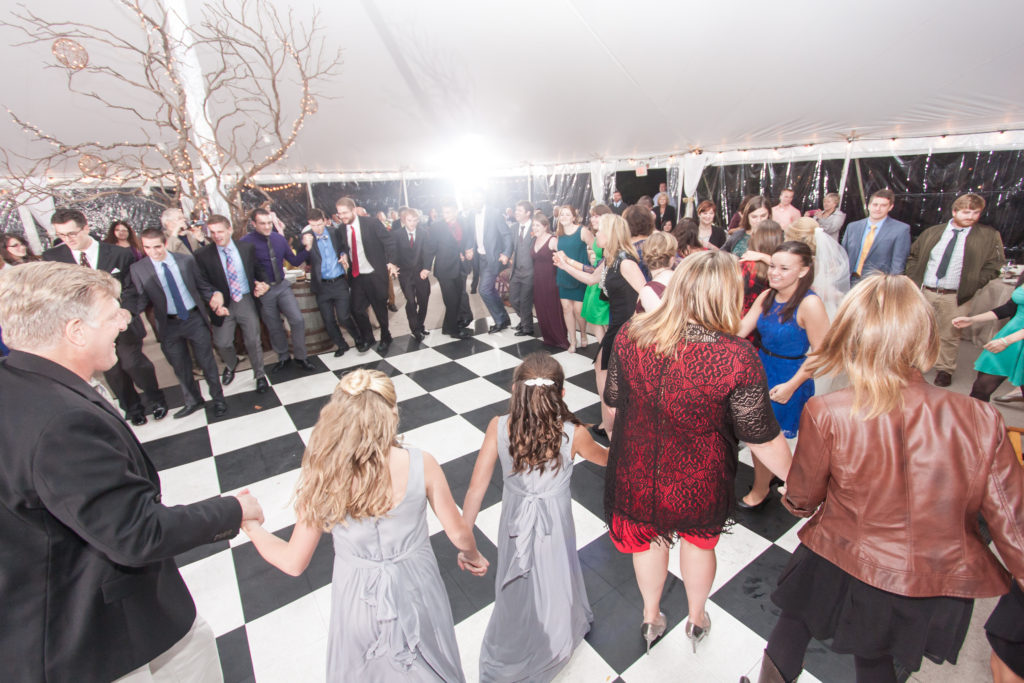
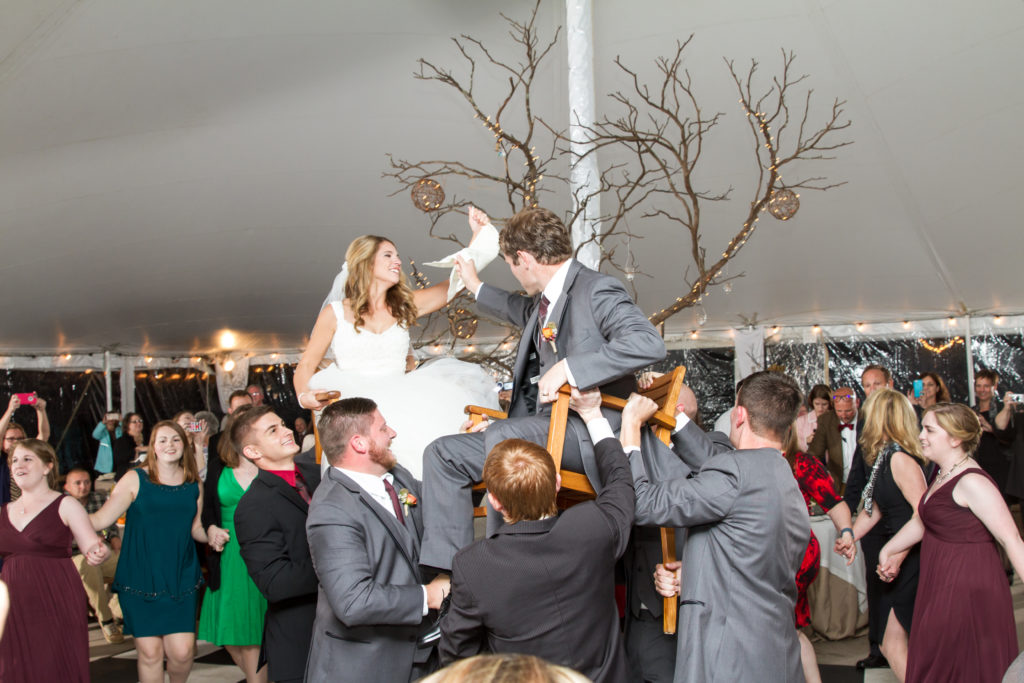
Comments are Disabled